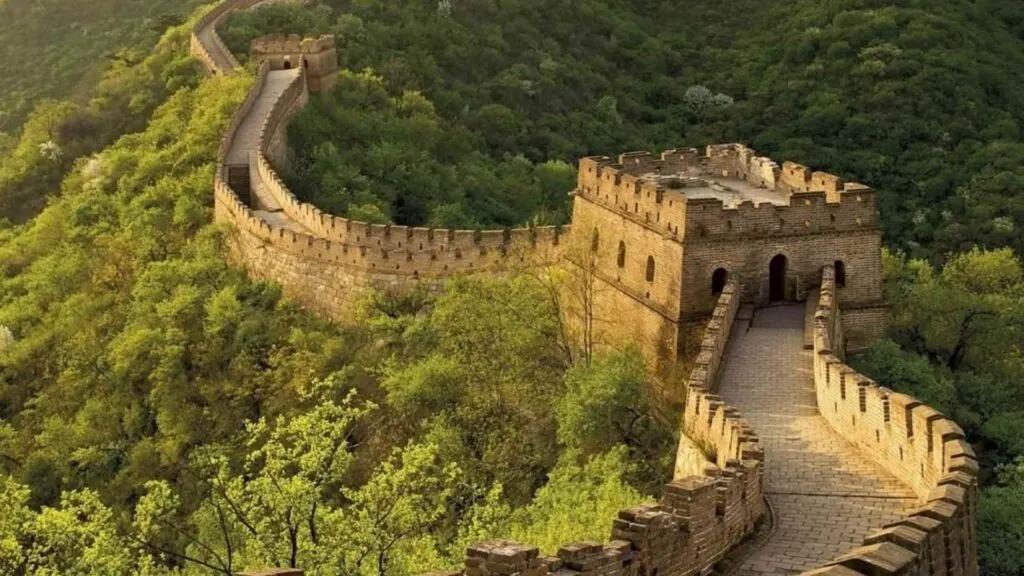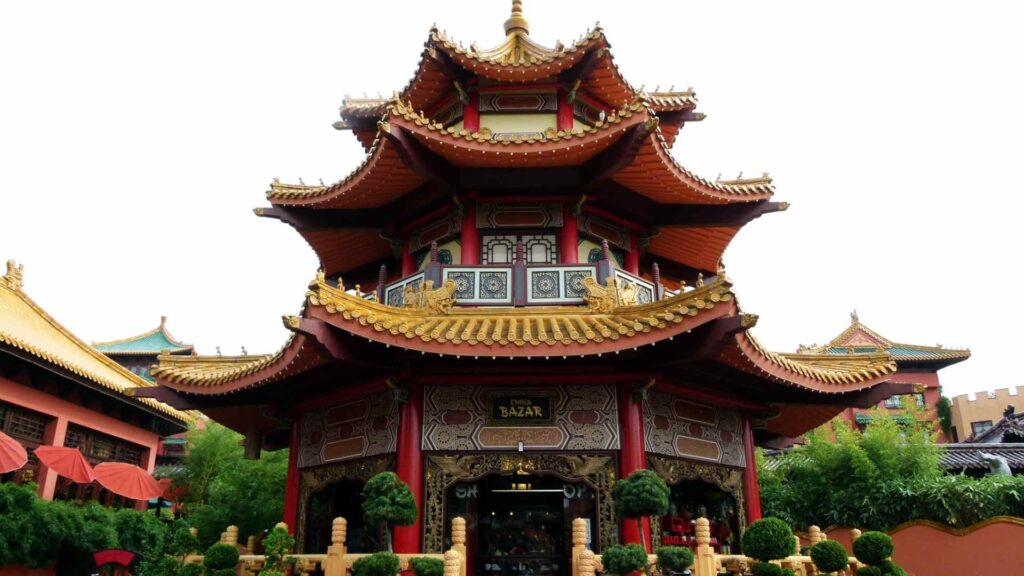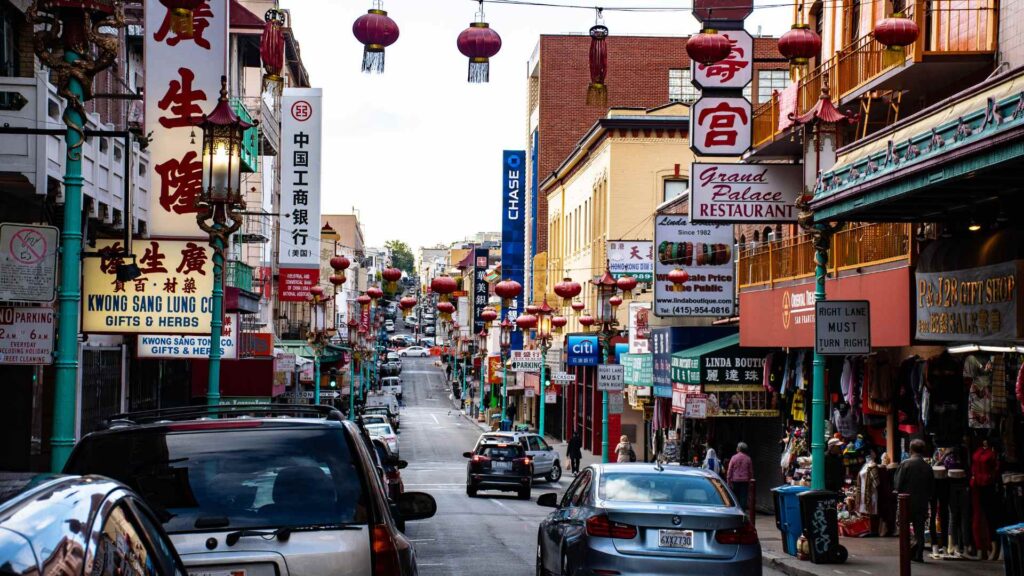China is one of the world’s oldest civilizations, filled with captivating stories, unique traditions, and awe-inspiring landscapes.
Here’s an ultimate guide to 145 intriguing fun facts about China that spans its culture, history, innovations, and more. Whether you’re curious or planning a trip, these fun facts will surely amaze you!
Geography and Nature of China
- China is home to the tallest mountain on Earth, Mount Everest, shared with Nepal, standing at 29,032 feet.
- The Yangtze River is Asia’s longest river, flowing over 3,900 miles and serving as a crucial waterway.
- China has 14 neighboring countries, the most of any country worldwide.
- Over 40% of China is covered by mountains, making it one of the most mountainous countries.
- China’s deserts cover more land area than several European countries combined, with the Gobi and Taklamakan being the largest.
- China is home to the Giant Panda, an endangered species protected in natural reserves and zoos.
- The Karst Mountains in Guilin inspired landscapes in the movie “Avatar” with their unique, otherworldly shapes.
- The country boasts the world’s largest artificial forest in Inner Mongolia, known as the Three-North Shelterbelt Project.
- China has the third-largest number of UNESCO World Heritage Sites, preserving natural and cultural wonders.
- The country’s Huangguoshu Waterfall is one of the largest in Asia, attracting thousands of visitors yearly.
- The Yarlung Zangbo Grand Canyon in Tibet is the world’s deepest canyon, deeper than the Grand Canyon.
- China’s Rainbow Mountains in Zhangye Danxia are famous for their multicolored striped rock formations.
- The Jiuzhaigou Valley, a UNESCO site, is famed for its clear blue lakes and waterfalls.
- The Li River in Guilin is often regarded as one of the most picturesque river landscapes in the world.
- China has over 30,000 plant species, many unique to the region, contributing to its rich biodiversity.

Cultural Traditions and Customs
- The Chinese New Year, also called the Spring Festival, is the world’s largest annual migration as families reunite.
- Red is considered a lucky color in China, symbolizing happiness, prosperity, and good fortune.
- The Mid-Autumn Festival celebrates the harvest with mooncakes, a traditional pastry.
- The Dragon Boat Festival commemorates the poet Qu Yuan and features thrilling boat races.
- Chinese weddings are rich in tradition, with brides often wearing red to symbolize joy.
- Tea drinking is an essential cultural practice, dating back over 3,000 years.
- Feng Shui, an ancient Chinese practice, aims to harmonize individuals with their environment.
- Chinese calligraphy is a respected art form, often considered one of the highest visual arts in Chinese culture.
- The number 8 is extremely lucky in Chinese culture due to its phonetic similarity to “prosperity.”
- Dumplings symbolize wealth, as they resemble ancient Chinese currency ingots.
- Tomb Sweeping Day, or Qingming Festival, is a time to honor ancestors by tending to their graves.
- Chinese opera, one of the oldest dramatic art forms, combines singing, acting, and acrobatics.
- Kung Fu, a martial art, has deep cultural roots and is practiced for self-defense and discipline.
- Foot binding, once a symbol of beauty and status, was a Chinese practice for nearly a thousand years.
- The Chinese Zodiac assigns animals to each year, affecting personality traits and compatibility.

Historical Facts about China
- The Great Wall of China, stretching over 13,000 miles, was built over several dynasties.
- Ancient China invented paper around 105 AD, revolutionizing record-keeping and literacy.
- The Terracotta Army, discovered in 1974, includes over 8,000 life-sized soldiers guarding Emperor Qin’s tomb.
- Confucius, an influential philosopher, emphasized morality and societal roles, impacting Chinese values.
- The Han Dynasty (206 BC – 220 AD) was a golden age, advancing science, technology, and trade.
- China invented gunpowder, which drastically changed global warfare and military tactics.
- Silk Road trade connected China with Europe, exchanging goods, ideas, and culture for centuries.
- The Forbidden City in Beijing was an imperial palace for over 500 years, symbolizing power.
- The Yuan Dynasty (1271–1368), established by the Mongols, marked the first time non-Chinese ruled China.
- China was the first country to develop paper money, which revolutionized trade and currency systems.
- Empress Wu Zetian was the only official female emperor in Chinese history, ruling during the Tang Dynasty.
- The invention of printing in ancient China paved the way for the spread of knowledge.
- The Ming Dynasty (1368–1644) is known for its grand architecture and expansion of the Great Wall.
- The Opium Wars in the 19th century forced China to open ports to foreign influence and trade.
- Buddhism reached China from India along the Silk Road, shaping Chinese religious practices.

Modern China Innovations and Economy
- China is the world’s largest manufacturer, producing electronics, textiles, and machinery.
- The high-speed rail network in China is the world’s largest, connecting cities at record speeds.
- Alipay and WeChat Pay dominate China’s cashless society, with digital payments commonplace.
- China has the world’s largest internet user population, with over 900 million users.
- China’s space agency landed a rover on Mars in 2021, showcasing its growing space capabilities.
- The nation leads in renewable energy, especially solar and wind power.
- “Taobao” and “Tmall” are major e-commerce platforms, part of China’s booming online retail sector.
- China builds a skyscraper approximately every five days on average due to urbanization.
- Huawei, a tech giant, is known for pioneering 5G technology and telecommunications.
- The Belt and Road Initiative aims to revive Silk Road trade routes globally through infrastructure.
- China’s movie industry is one of the largest in the world, with Hollywood competing for access.
- Electric vehicle production is booming in China, with companies like BYD and NIO leading.
- Didi Chuxing, China’s rideshare company, rivals global brands like Uber in size and usage.
- China’s education system is highly competitive, especially with its “Gaokao” college entrance exam.
- The world’s largest artificial intelligence companies are emerging in China, revolutionizing tech.
Chinese Cuisine and Food Culture
- China is the birthplace of tea, consumed by billions worldwide, with varieties like green, black, and oolong.
- Chinese cuisine includes eight major culinary traditions, each with unique flavors and techniques.
- Noodles have a history dating back over 4,000 years, often symbolizing longevity.
- Hot pot is a popular communal dining experience, with regions offering various styles.
- Dim sum originated in Southern China and is enjoyed globally as small plates with tea.
- Peking duck, known for its crispy skin, is a famous dish originating from Beijing.
- The use of chopsticks dates back over 3,000 years and is integral to Chinese dining etiquette.
- Tofu, a protein-rich food, was invented in China over 2,000 years ago.
- Mooncakes, eaten during the Mid-Autumn Festival, have intricate designs and fillings.
- Szechuan cuisine is known for its spicy flavors, especially the mouth-numbing Sichuan pepper.
- The “Four Great Inventions of Ancient China” include paper, gunpowder, printing, and the compass.
- Dumplings are traditionally eaten during the Chinese New Year, symbolizing wealth.
- “Eight Treasures Tea” is a blend of herbs and fruits with health-boosting properties.
- Rice is the staple food in Southern China, while Northern China favors wheat-based dishes.
- Street food culture in cities like Beijing and Xi’an showcases regional specialties.
Unique Quirks and Fun Facts
- “China” as a name derives from the Qin (Chin) Dynasty, one of its first unified empires.
- There are more English speakers in China than in the United States due to education emphasis.
- Basketball is hugely popular in China, with millions of fans following the NBA.
- China’s education system is highly intense, with students often studying for 12+ hours daily.
- The Chinese government regulates internet content, creating the “Great Firewall.”
- The giant Leshan Buddha statue is the world’s largest ancient Buddha, carved in 713 AD.
- “Mandarin” refers both to China’s official language and a type of Chinese citrus fruit.
- China has an island, Hainan, that’s famous for its tropical beaches and palm trees.
- Fortune cookies were invented in the U.S., not China, and are mostly unknown there.
- China has an official national animal—the dragon, representing strength and authority.
- Ping pong, or table tennis, is the country’s national sport and a huge cultural passion.
- Chinese martial arts were popularized in Western culture through Bruce Lee’s movies.
- Hair salons in China offer head massages as part of their regular services.
- China’s birth rate is declining, despite the previous one-child policy being lifted.
- Unlike most countries, China uses the lunar calendar for festivals like the Chinese New Year.
- “China Rose” or hibiscus is a popular ornamental flower symbolizing gentleness.
Bonus Facts about China
- Each Chinese province has unique dialects, some unintelligible to speakers of other dialects.
- China’s writing system is one of the oldest, with characters representing concepts.
- The Lunar New Year’s Eve television gala is watched by over 1 billion people.
- China has over 5,000 airports, connecting even remote cities.
- Fireworks were invented in ancient China and remain popular for celebrations.
- Over 3,000 years ago, early Chinese astronomers discovered supernovae.
- Dragon dances and lion dances are traditional performances at festivals.
- Traditional Chinese medicine is over 2,000 years old, emphasizing herbal remedies.
- Over 70 million Chinese citizens practice Buddhism, making it the largest religion in China.
- The world’s oldest surviving paper map dates back to the Han Dynasty in China.
- Chinese “face” culture emphasizes respect, reputation, and social standing.
- Xi’an, an ancient capital, was the start of the Silk Road for centuries.
- Chinese horoscopes are based on the lunar calendar, differing from Western astrology.
- Ancient Chinese scholars documented solar eclipses and comets.
- Mahjong is a popular game played with tiles, known for its strategic gameplay.
- Calligraphy brushes were historically made from animal hair.
- Red envelopes filled with money are given during the Lunar New Year as gifts.
- Shaolin monks are renowned for their martial arts and disciplined lifestyle.
- “Guanxi” is a cultural term signifying networks of personal relationships.
